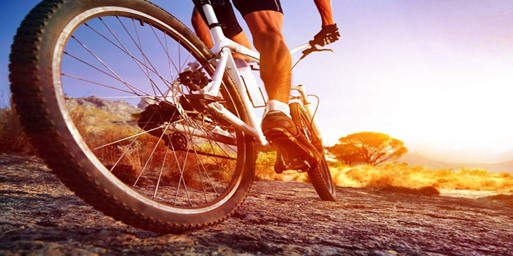Tips to Prevent Cycling Knee Pain
But knee pain from indoor or outdoor cycling doesn’t have to put the brakes on your rides. Learn common causes of cycling knee pain and tips to prevent it.
What causes knee pain from cycling?
Cycling is a low-impact form of exercise that can improve your leg strength and range of motion. While it places less strain on the knees than walking or jogging, cycling can still lead to knee pain.
The repetitive motion of bending and extending the knees with cycling can lead to overuse injuries, or overtraining. These conditions result from repeated activity in the same pattern of motion. With cycling, this irritates structures in or around the knees.

How can you prevent knee pain from cycling?
Making some key adjustments to your cycling routine can help prevent knee pain. Keeping your joints in good alignment and keeping intensity low are good places to start.
1. Warm up and cool down
Warming up and cooling down prepares your body for exercise. They allow time for your muscles to adjust to an increase and decrease in physical activity. They’re key for preventing injury and helping with recovery from your workout.
2. Adjust your seat height
Your seat’s height can have a big impact on making cycling comfortable or uncomfortable. Lower seat heights increase the amount that your knees bend, which ups the pressure around the knees. For knee joint pain, opt for a higher seat height, which is often more comfortable if you have knee osteoarthritis.
But for other types of knee pain, a lower seat height may actually be better. IT band irritation occurs when the knee is repeatedly bent to 30 degrees. A lower seat height requires bending the knees more than 30 degrees, which can help avoid friction on the IT band. A lower seat height may also be beneficial for ACL injuries to avoid shearing stress.
3. Wear supportive shoes
Wearing supportive shoes helps keep your feet securely in the pedals. This will prevent your feet from slipping or coming loose during cycling. Unsupportive shoes, like flip-flops or slip-ons, may make you awkwardly position your feet to keep your shoes from falling off.

Because cycling is a highly repetitive activity, any awkward positioning can easily lead to strain or injury. Unsupportive shoes may also lead to increased foot pronation, a risk factor for cycling knee pain.
4. Check your bike's resistance
If you’re having pain with cycling, try decreasing your bike’s resistance. Although cycling is relatively low impact, too much resistance can still irritate the knee joints. Higher resistance places more pressure on the medial (inner) side of the knee joint. This area is often painful for those with knee osteoarthritis. Cycling with less resistance can help decrease knee joint irritation.


 Tel : +0592 6105769
Tel : +0592 6105769 Fax : +0592 6105769
Fax : +0592 6105769 Email : sales@wuwind.com
Email : sales@wuwind.com